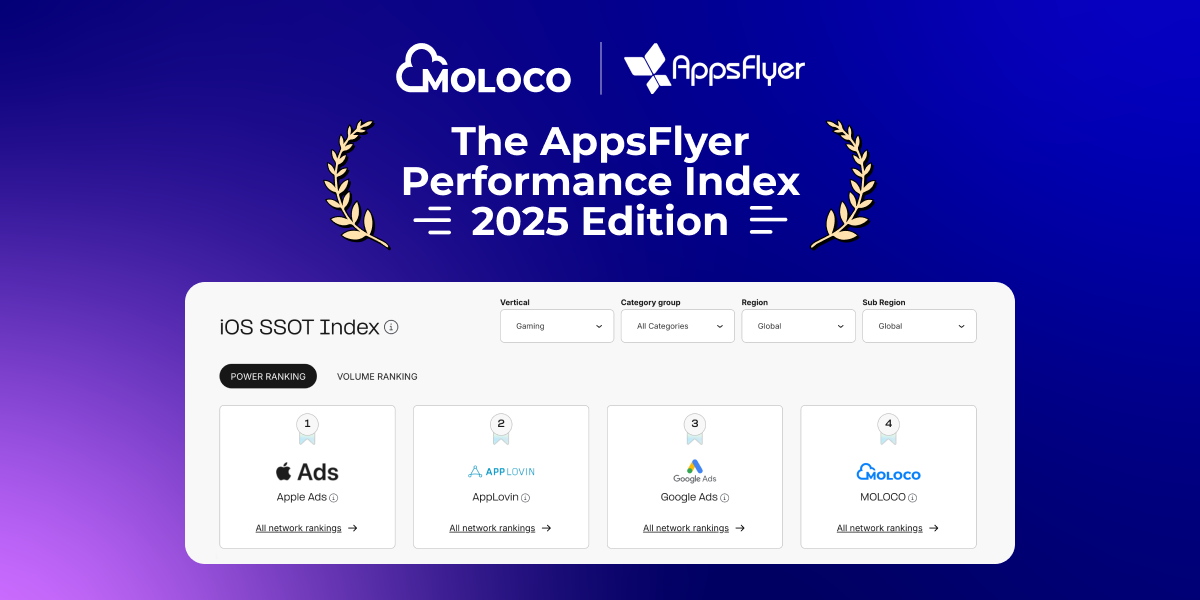Blog Article
When marketers (or their agencies) begin their campaign planning process the first step is to ask: who do we want to target?
To answer it, marketers look at their past campaigns to see who installed an app and who uses it most frequently, meaning who are their most high-value users?
Media buyers often approach a campaign by identifying third-party datasets that map to specific aspects of the personals, e.g. moms who live on the West Coast. They also look for apps and channels that are endemic to their personas -- parenting apps for moms, for example.
Given that most of these personas are highly nuanced (e.g. gender + age + attitude + life stage), media buyers will acquire multiple datasets as well as develop a complex channel strategy in order to execute against the various personas/cohorts/lookalikes.
The challenges to this approach are legion. To begin, third-party datasets are very problematic. How are these audiences created? Which data points are leveraged in order to label a particular user “budget conscious” or in market for a particular product? How often are those audience segments refreshed?
A big challenge with this approach to targeting is inherently biased. The user base for a specific marketplace app may be predominantly women, but why is that the case? Is it because the app marketers have always targeted women? Who’s to say that men won’t install the app and make frequent purchases if targeted as part of a UA campaign?
Worst of all, preconceived ideas of who an audience is can’t help but diminish the marketer’s targeting pool, and ultimately, a brand’s ability to grow its customer base. Let’s say you have a marketplace app that specializes in household items sold in bulk. Market research and surveys that go back many years will tell you to target women.
But what about men who live alone? They may prefer to buy paper towels in bulk, especially when they can do so quickly and from the convenience of an app. Does it make sense to eliminate fully 25% of the consumer base as a matter of course?
Machine learning offers a wholly different paradigm for targeting than the traditional persona-based approach. It begins with a brand’s first-party data; rather than look for proxies that represent “ideal” prospects, it parses past campaign data for relationships between inputs (essentially user and channel characteristics) and outputs (Did the user click an ad? Install an app? Use the app?).
In the best case scenarios, machine learning will look at a brand’s entire campaign log to understand those relationships and why a campaign performed as it did. This approach eliminates the bias that’s built into personas.
Granted, app installs that result from seeing an ad are far and few between, especially when one considers how many impressions were purchased for a campaign. As Dr. Sechan Oh, Moloco’s Director of Machine Learning, explained in a blog post, “when we’re looking for features of a conversion, we’re looking at a sparse dataset.”
But it’s an exercise that will deliver far better return on ad spend (ROAS). The benefit of relying on that relationship of inputs to output is that it opens up a greater pool of inventory to a campaign. Essentially, the entire web is available, making it possible to find high value users even if they never visit an endemic app or channel, or match one of the personas.
This logic – use machine learning to find high-quality users, not pre-set audiences – goes against established marketing doctrine. Marketers can be uncomfortable with abandoning the persona-based approach to targeting.
But the truth is, that approach was never truly effective in the digital world. And now that third-party data is going away and privacy restrictions are on the rise, it’s time for marketers to rethink the way they target and acquire their audiences.
 The AppsFlyer Performance Index (2025 Edition) recognizes Moloco as a top mobile growth partner
The AppsFlyer Performance Index (2025 Edition) recognizes Moloco as a top mobile growth partnerCheck out Moloco’s top rankings in the 2025 edition of AppsFlyer’s Performance Index, a trusted benchmark for mobile app marketers seeking leading media partners.

.jpg) Unwrapping Seasonal Strategies: Where the Growth Lives Across Q4 and Q5
Unwrapping Seasonal Strategies: Where the Growth Lives Across Q4 and Q5Winning the holidays means seeing where user behavior and marketing activity converge—and diverge.

.avif) We Analyzed 20,000+ Real-Money Casino Ad Creatives. Here’s What We Found.
We Analyzed 20,000+ Real-Money Casino Ad Creatives. Here’s What We Found.We unpack findings from a 20,000+ creative analysis in real-money casino ads to help you evaluate your portfolio of ad creatives.

 Driving Conversions in iGaming: What Today’s Best-Performing Creatives Teach Us in EMEA
Driving Conversions in iGaming: What Today’s Best-Performing Creatives Teach Us in EMEALearn how to drive conversions in RMG by seeing best performing EMEA creatives

